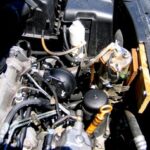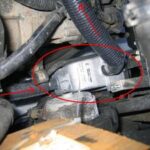The engine of any car operates by burning fuel thus making it dangerously hot. To take care of this problem, cooling systems are developed. A cooling system’s job is to make sure that the operating temperature of the engine is maintained. It does this by circulating coolant through the channels inside the engine to dissipate heat.
Since water is being used as coolant, it is in danger of freezing during winter months. To avoid this, antifreeze is added to the cooling water. This reduces the freezing point of the coolant making sure that it will not freeze in winter and result to a cracked radiator.
Just like every fluid in a car, there is a recommended time to replace antifreeze. Most automakers recommend that you do it every 2 or 3 years of after driving 30,000 miles. More and more antifreeze manufacturers though are coming up with long-life antifreeze which is advertised to not need any replacement until after 50,000 miles.
The reason why antifreeze should be changed should be understood for one to determine when would be the right time to change it. While antifreeze has its advantages, it also has disadvantages. One of these is that it is very corrosive. To combat this, antifreeze is manufactured with their own corrosion inhibitors. When these inhibitors are used up or when they are close to being depleted, that is the perfect time to replace it.
But how does one determine when the antifreeze’s corrosion inhibitors are running out? Makers of these products usually offer testing kits to find out how the antifreeze’s corrosion inhibitors are holding up. These strips work like a litmus paper but they are specialized so that the color they turn to would give you an idea how much longer the antifreeze can be safely used.
When you the inhibitors are nearly depleted and you decided to change it, it is recommended that the radiator be reverse flushed. Usually, car owners replace their coolant by just draining it and adding the new coolant afterward. This will not suffice though if you want your antifreeze to last a long time.
Reverse flushing not only drains the used coolant but also helps dislodge solid particles from the bottom of the radiator and pushes them out. These particles could clog up the radiator thus reducing its effectiveness to dissipate heat. Also, if you are planning to use the so-called long-life antifreeze, your system should be as clean as possible. If this antifreeze is used in a dirty system, its lifespan would be only equal to that of ordinary antifreeze which is at 2 to 3 years. That means good money wasted.
Another tip to those people who want to save good money: never use water only as coolant as it does not have the corrosion inhibitor that antifreeze has. Instead of saving money, you will end up paying a lot for radiator repair and that’s not the only thing that could be damaged. An inefficient cooling system could cause your engine to be fried. Nobody wants that.






